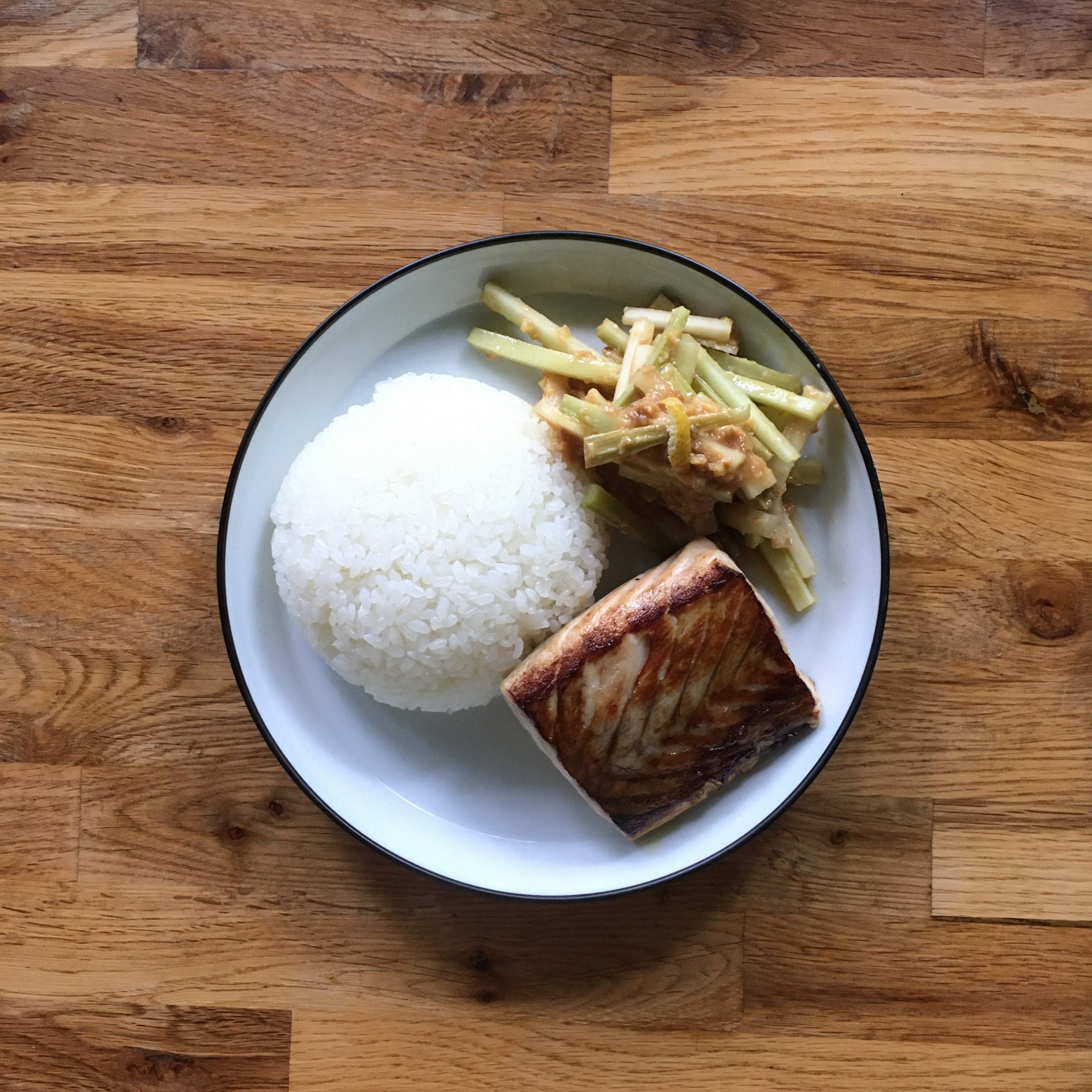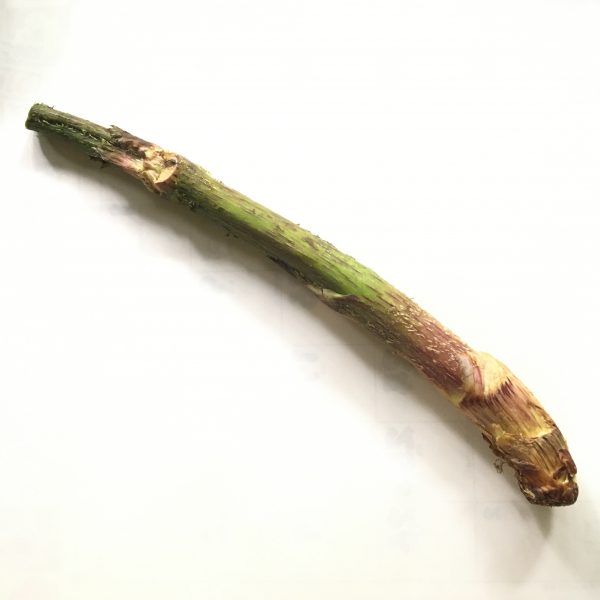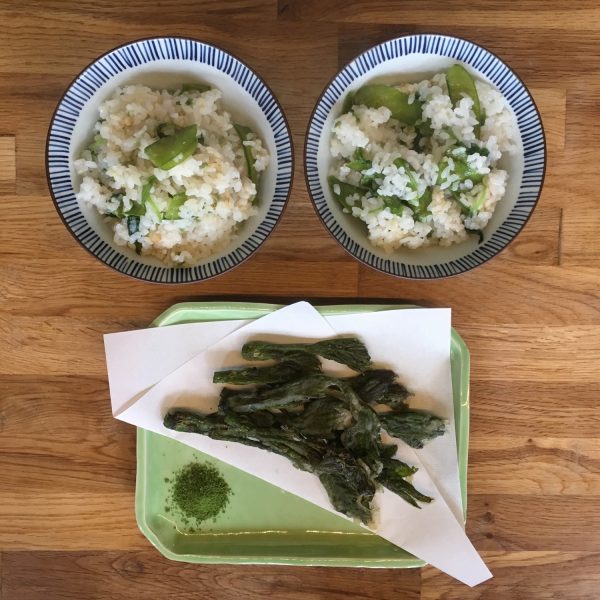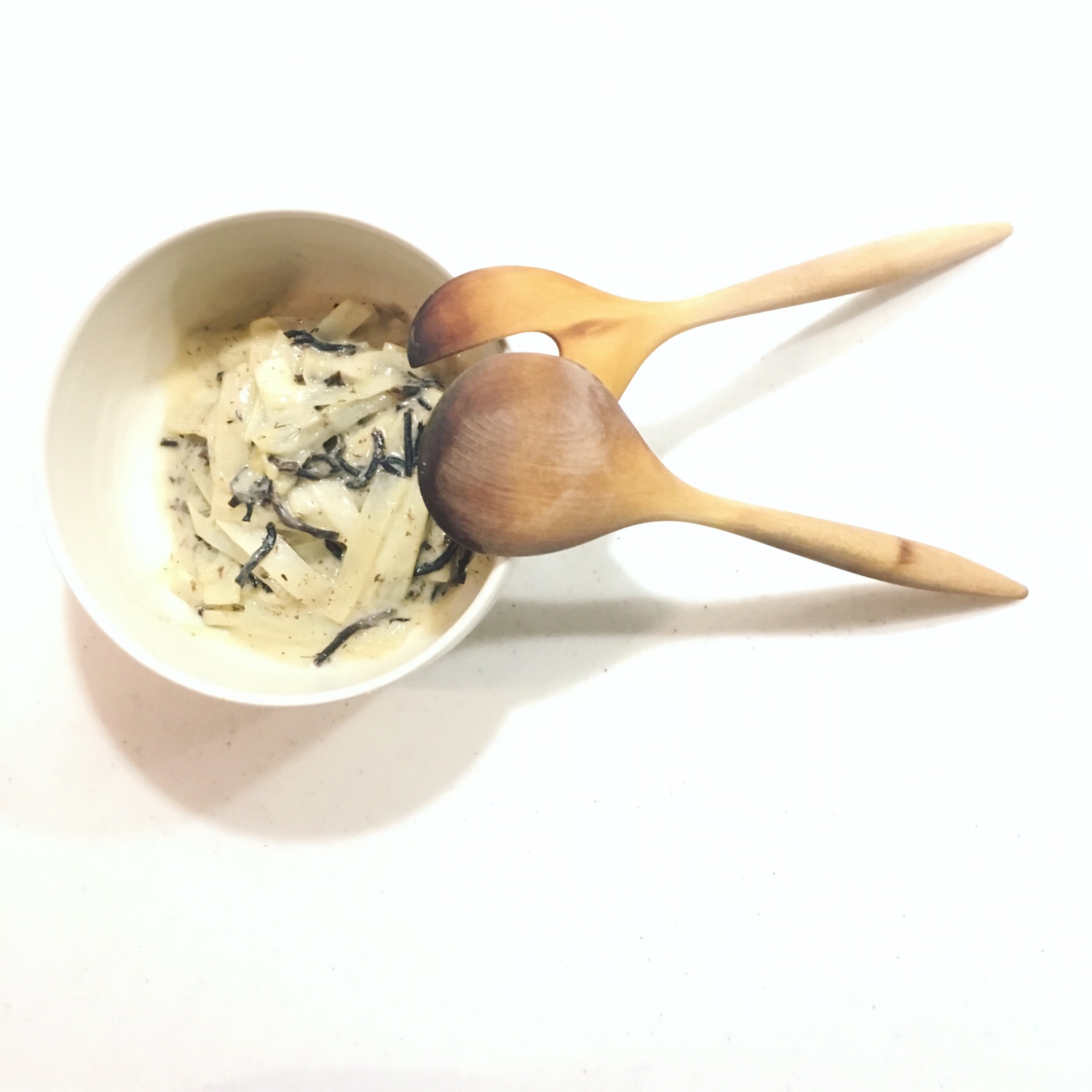One of the wild spring green I like to cook is udo or rather yama udo ヤマウドウ. It is a kind of long stick that likes to grow on steep road sides and is very easy to prepare, with a distinctive taste but not strong such that of fukinoto. One preparation that is really easy is with miso in miso ae. Usually I would blanched it to soften it a bit and remove its bitterness or tartness, but I realized while doing a bit of reading, that vinegar water would work as well, which for the lemon-miso ae I wanted to make was more than perfect. Indeed, while I am waiting for my lemon tree to bear fruits (I lost all last year in early strong winds and heavy rains), I found some delicious lemons at the local market. Hence, recently there has been a lot of lemon in my recipe, the lemon cake, lemon pancakes, lemon pasta… The vinegar miso ae is taken to a new level of rich flavors with the addition of the lemon. It works the same way as yuzu miso. That said my recipe today is really super simple, and if you can’t go to pick yama udo yourself or find some, you can try with regular udo. Its taste is much milder but that works very nicely too. And if there is no udo where you live, try with wild asparagus or green asparagus, that will work fine as well.

Yama udo with lemon miso ae (2 servings as side)
- 1 udo
- 2tsp of miso (I used my homemade miso)
- 3tsp of vinegar (I used rice vinegar)
- 1tsp of sugar
- a little bit of lemon zest
- a little of lemon juice (about 1tsp)
Peel the udo and cut in 3cm long pieces. Then slice vertically with about 2-3mm thick, then make sticks. Set in a bowl with water and 2tbs of vinegar for 15min.
In the meantime, in a bowl, mix the miso, 1tbs of vinegar and the rest of the ingredients. Stir well.
Drain well the udo and add to the miso mix. Stir well and serve. That’s it, really simple isn’t it?
I served it with grilled sawara (Japanese Spanish mackerel) and plain white rice.




